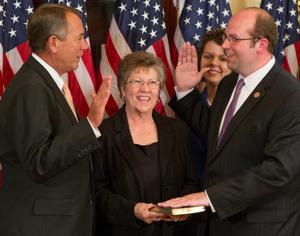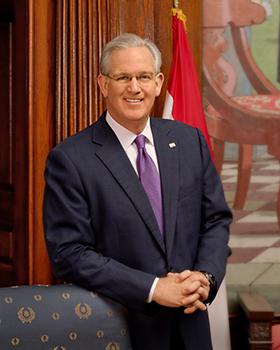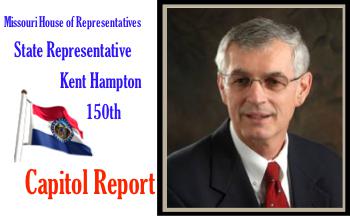
Submitted by
Dee Loflin, SMT Manager/Writer
Missouri/Washington DC - Today, Congressman Jason Smith announced he has opened offices in Missouri and Washington D.C. to serve his constituents in Missouri’s Eighth Congressional District. Smith now has offices open in Cape Girardeau, West Plains, Rolla, Farmington and Washington D.C.
“My staff and I work for the families who call the Eighth District home and we encourage people to reach out to us if we can ever be of assistance with federal agencies like the Social Security Administration or the Veterans Administration. We also welcome input on legislation being considered in Washington,” said Smith. “Our offices in Missouri and the Washington office belong to residents of the Eighth District. Our doors will always be open and we encourage anyone who needs assistance or guidance to reach out.”
Below is a list of Smith’s office locations and contact information:
Cape Girardeau District Office
2502 Tanner Drive, Suite 205
Cape Girardeau, MO 63703
573-335-0101
Fax: 573-335-1931
and the
Washington Office
2230 Rayburn House Office Building
Washington, D.C. 20515
202-225-4404
Fax: 202-226-0326
Email: rep.jason.smith@mail.house.gov
Smith will host an open house at each of his Missouri office locations in the coming weeks to give constituents a chance to meet his district staff.

Submitted by
Dee Loflin, SMT Manager/Writer
Washington DC – In less than 18 hours after Missouri polling locations closed, Jason Smith was sworn into the U.S. House of Representatives to represent Missouri’s Eighth District.
"We hit the ground running in our campaign and today we are hitting the ground running in the House of Representatives. This district has been without a representative for 135 days now and it was important to me to be sworn in as soon as possible.” said Smith. “Eighth District voters sent a strong message about their conservative values and I look forward to working hard to meet their expectations.”
Smith won a landslide victory in Missouri’s Eighth District capturing over 67% of the vote and winning 28 of the 30 counties in the Eighth District. The entire Missouri House Delegation joined Smith as he was sworn into office. U.S. Senator Roy Blunt also joined Smith on the House floor for swearing in.

Submitted by
Beth Farrah, SMT Writer
Jefferson City, Missouri – “Missouri’s public schools are vital to the economic future of state”, Governor Nixon says.
Governor Nixon issued the following statement regarding Education Week’s 2013 Diploma’s Count report, released today, showing Missouri with the 8th highest graduation rate in the country. According to the report, over 80 percent of Missouri high school students graduated with a regular diploma in 2010, up 9.5 percent from 2000. This is the second year the state has been in the top 10 and the fourth consecutive year the state’s graduation rate has increased.
“Quality public schools are essential to our state’s economic competitiveness, and today’s report is yet another indication that our smart, strategic investments in education are paying real dividends for Missouri families and communities,” Governor Nixon said. “There is more work to do, but with math and reading scores going up and dropout rates going down, Missouri’s public schools are clearly moving in the right direction. To ensure our workforce is ready to compete and win in the global economy, we must continue to build on this positive momentum, not undermine it with fiscally irresponsible experiments.”
Yesterday, Governor Nixon joined business leaders, educators, administrators and parents to discuss his veto of House Bill 253, which would undermine Missouri’s economic competitiveness by jeopardizing funding for public education.
All states, public school districts, and local education agencies are required by the U.S. Department of Education to publicly report comparable high school graduation rates using its four-year adjusted cohort rate. The four-year adjusted cohort rate is a different method than the Diplomas Count report uses to calculate graduation rate.

Submitted by
Dee Loflin, SMT Manager/Writer
Jefferson City, Missouri - I want to welcome my legislative assistant, Shana Beasley, back to the Capitol and welcome her daughter Quinn Elimarie Beasley into the world. Quinn was born on April 3rd.
Interim has officially started at the Capitol and things have seemingly slowed down, at least on the House floor. Although there is always plenty going on in the district to keep us busy, and we are always more than happy to assist our constituents in any way we can. This week’s Capitol Report begins our “This Day in History Series” that we will continue throughout Interim.
THIS WEEK IN HISTORY:
On June 5, 1933, the United States went off the gold standard, a monetary system in which currency is backed by gold, when Congress enacted a joint resolution nullifying the right of creditors to demand payment in gold. The United States had been on a gold standard since 1879, except for an embargo on gold exports during World War I, but bank failures during the Great Depression of the 1930s frightened the public into hoarding gold, making the policy untenable.
Soon after taking office in March 1933, Roosevelt declared a nationwide bank moratorium in order to prevent a run on the banks by consumers lacking confidence in the economy. He also forbade banks to pay out gold or to export it. According to Keynesian economic theory, one of the best ways to fight off an economic downturn is to inflate the money supply. And increasing the amount of gold held by the Federal Reserve would in turn increase its power to inflate the money supply. Facing similar pressures, Britain had dropped the gold standard in 1931, and Roosevelt had taken note.
On April 5, 1933, Roosevelt ordered all gold coins and gold certificates in denominations of more than $100 turned in for other money. It required all persons to deliver all gold coin, gold bullion and gold certificates owned by them to the Federal Reserve by May 1 for the set price of $20.67 per ounce. By May 10, the government had taken in $300 million of gold coin and $470 million of gold certificates. Two months later, a joint resolution of Congress abrogated the gold clauses in many public and private obligations that required the debtor to repay the creditor in gold dollars of the same weight and fineness as those borrowed. In 1934, the government price of gold was increased to $35 per ounce, effectively increasing the gold on the Federal Reserve's balance sheets by 69 percent. This increase in assets allowed the Federal Reserve to further inflate the money supply.
The government held the $35 per ounce price until August 15, 1971, when President Richard Nixon announced that the United States would no longer convert dollars to gold at a fixed value, thus completely abandoning the gold standard. In 1974, President Gerald Ford signed legislation that permitted Americans again to own gold bullion.
A shout out to the Holcomb Hornets baseball team for capturing 3rd place in 2a State!
As always, it is an honor to serve you in the Missouri House. If you would like to discuss any issue, please call 573-751-3629. You can also email me at Kent.Hampton@house.mo.gov. I look forward to hearing from you.


